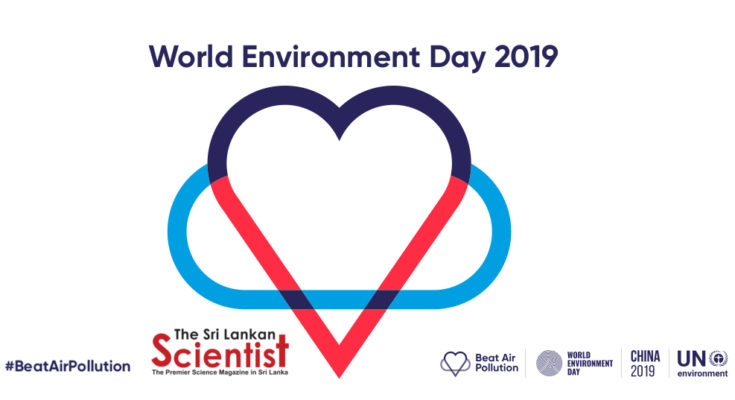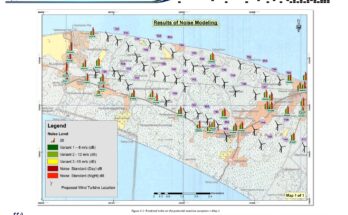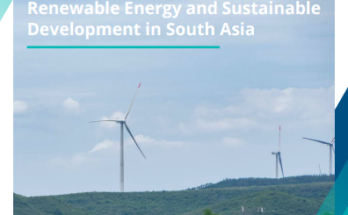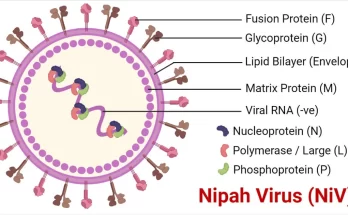Celebrated every year on June 5, World Environment Day is the United Nations’ biggest annual event for positive environmental action to encourage worldwide awareness of the need to protect our planet.. Since the first World Environment Day in 1974, the event has grown to become a global platform for positive public outreach on the environment in over 100 countries. This year, China will host World Environment Day, with events taking place in the eastern city of Hangzhou; in addition, there will be a large number of events and celebrations around the world.
Air Pollution
The theme of World Environment Day 2019 is #BeatAirPollution, calling on governments, industry, communities and individuals to take action to explore renewable energy and green technologies, and improve the air quality in cities and regions across the world. This complex, existential challenge demands immediate attention and action. More than 6 billion people, one-third of them children, regularly breathe air that is so polluted it puts their health and well-being at risk. That’s more than 90 per cent of the world’s population. In many developing countries, people face the double burden of indoor and outdoor pollution.
With rapid development projects going on all around us, the environment is taking a heavy beating from the human activities related to those development projects. Every day tons of toxic and harmful substances are released to the soil, water and air polluting the environment. One of the quickest impacts of environmental pollution comes from air pollution, as it is visible and easily notable to the naked eye and easily felt by our respiratory systems when we breath. In many parts of the world where rapid development projects are going on the air pollution has become a major problem and many countries are doing their best to keep their air as clean as possible.
Air pollution occurs when various substances like gasses, smaller particles, dusts and chemicals are released in to the earth atmosphere. These substances most of the time are harmful to the living organisms as these can cause diseases that can be deadly.
Air pollution also goes to the heart of social justice and global inequality. According to the World Health Organization (WHO), 97 per cent of cities in low- and middle-income countries with more than 100,000 inhabitants do not meet air quality guidelines. That percentage falls to 49 in high-income countries. The good news is that air pollution is preventable. The solutions — laws, standards, policies, programmes, investments and technologies — are widely known and can be implemented. Clean air is a human right. It is everyone’s right and everyone’s responsibility. Each one of us has a role to play in ensuring that the air we breathe does not end up killing us.
Major Air Pollutants
An air pollutant is any kind of a substance which is released in to the air that can be toxic or harmful to humans and other living organisms. These substances come in many forms like gasses, droplets, dust particles or vapors. These pollutants are mostly resulted from human activities while some can be of natural origin. Given below are some of the main air pollutants
Carbon Dioxide – The most prominent Greenhouse gas, emitted mainly due fossil fuel burning and deforestation increases the Carbon Dioxide accumulation in the atmosphere.
Sulphur Oxides – Mainly released from Volcanos and some of the factories where Sulphur is used as a raw material (Ex – Rubber vulcanization).
Nitrogen Oxides – Formed in Vehicle Engines, and also during thunderstorms by lightening sparks.
Carbon Monoxide – Released during fossil fuel burning, so the major source again is the vehicle engines.
Volatile Organic Compounds – Many organic compounds that we use in our day to day lives are volatile and when these when these are released in to the atmosphere they work as a major air pollutant. Examples are Thinner, Fuels….etc
Particulate matter – There are loads of particle types released in to the atmosphere as results of human and natural activities, these include dust particles or ash particles that are visible to the eye and microscopic particles that are smaller than 2.5 micro meters. These smaller ones are much dangerous than the bigger ones as they can go through all our defenses and penetrate all the way to the blood circulation itself.
Toxic Metals like Lead or Mercury
Chlorofluorocarbons – Harmful to the Ozone layer, currently banned in most of the countries.
Secondary Air pollutants – Air pollutants created from primary air pollutants are called secondary air pollutants, Ground level Ozone is one of the main examples. Ozone is normally created through reactions involving oxides of nitrogen.
Air pollution Sources
How much pollution we breathe in is dependent on many factors, such as access to clean energy for cooking and heating, the time of day and the weather. Rush hour is an obvious source of local pollution, but air pollution can travel long distances, sometimes across continents on international weather patterns.
Nobody is safe from this pollution, which comes from five main human sources. These sources spew out a range of substances including the once listed above–all of which are harmful to human health.
Household
The main source of household air pollution is the indoor burning of fossil fuels, wood and other biomass-based fuels to cook, heat and light homes. Around 3.8 million premature deaths are caused by indoor air pollution each year, the vast majority of them in the developing world.
Out of 193 countries, 97 countries have increased the percentage of households that have access to cleaner burning fuels to over 85 percent. However, 3 billion people continue to use solid fuels and open fires for cooking, heating, and lighting. The adoption of cleaner, more modern stoves and fuels can reduce the risks of illness and save lives. Even though this is one of the most dangerous sources of Air Pollution, in Sri Lanka this is most of the time neglected and many including women and children are exposed to many harmful substances leading to many health complications.
Industry
In Sri Lanka, energy production is now becoming a leading source of air pollution. Recently established coal-burning power plant has now become a major contributor, while diesel generators are a growing concern in some areas. Industrial processes and solvent use, in the industrial zones, also pollute the air.
Policies and programmes aimed at increasing energy efficiency and production from renewable sources can have a direct impact on a country’s air quality. At the moment, 82 countries out of 193 have incentives that promote investment in renewable energy production, cleaner production, energy efficiency and pollution control.
Transport
The global transport sector accounts for of energy-related carbon dioxide emissions and this proportion is rising. Transport emissions have been linked to nearly 400,000 premature deaths. Almost half of all deaths by air pollution from transport are caused by diesel emissions, while those living closest to major traffic arteries are up to 12 percent more likely to be diagnosed with dementia.
Reducing vehicle emissions is an important intervention to improve air quality, especially in urban areas. Policies and standards that require the use of cleaner fuels and advanced vehicle emissions standards can reduce vehicle emissions by 90 percent or more.
Agriculture
There are two major sources of air pollution from agriculture: livestock, which produces methane and ammonia, and the burning of agricultural waste. Methane emissions contribute to ground-level ozone, which causes asthma and other respiratory illnesses. Methane is also a more potent global warming gas than carbon dioxide – its impact is 34 times greater over a 100-year period. Around 24 percent of all greenhouse gases emitted worldwide come agriculture, forestry and other land-use.
There are many ways to reduce air pollution from this source. People can move to a plant-based diet and/or reduce food waste, while farmers can reduce methane from livestock by optimizing feed digestibility and improving grazing and grassland management.
Waste
Open waste burning and organic waste in landfills release harmful dioxins, furans, methane, and black carbon into the atmosphere. Globally, an estimated 40 percent of global waste is openly burned. The problem is most severe in urbanizing regions and developing countries. Open burning of agricultural and municipal waste is practiced in 166 out of 193 countries.
Improving the collection, separation, and disposal of solid waste reduces the amount of waste that is burned or landfilled. Separating organic waste and turning it into compost or bioenergy improves soil fertility and provides an alternative energy source. Reducing the estimated one-third of all food that is lost or wasted can also improve air quality.
Other sources
Not all air pollution comes from human activity. Volcanic eruptions, dust storms and other natural processes also cause problems. Sand and dust storms are particularly concerning. Fine particles of dust can
travel thousands of miles on the back of these storms, which may also carry pathogens and harmful substances, causing acute and chronic respiratory problems.
Air Quality Monitoring – a must in understanding air pollution
If we want to get a clear picture of the air pollution we have to have a good network of air quality monitoring facilities around the
country. Specially we should have real time data for most of the air pollution prone cities (Kandy, Colombo, Jaffna……) and other places like adgencent areas of coal and diesel power plants, industrial zones, Tourist hotspots …etc
But as a country Sri Lanka is far from reaching this goal as
Sri Lanka have only one functioning air quality monitoring station established in the country. This unit too can’t measure PM 2.5 fine particulate matter, and the readings are not openly published. Currently the Air Quality measurements available online are from the US embassy air quality monitoring station situated within the embassy premises. So as a country Sri Lanka should focus on battling air pollution as the air quality levels of a country reflects the countries commitment towards the environmental conservation.




